Davis Inman's Ancestors |
Click on a name for info, click on an arrow to follow that branch, click Home to go to the main page, or click for an Alphabetic List of all Names. |
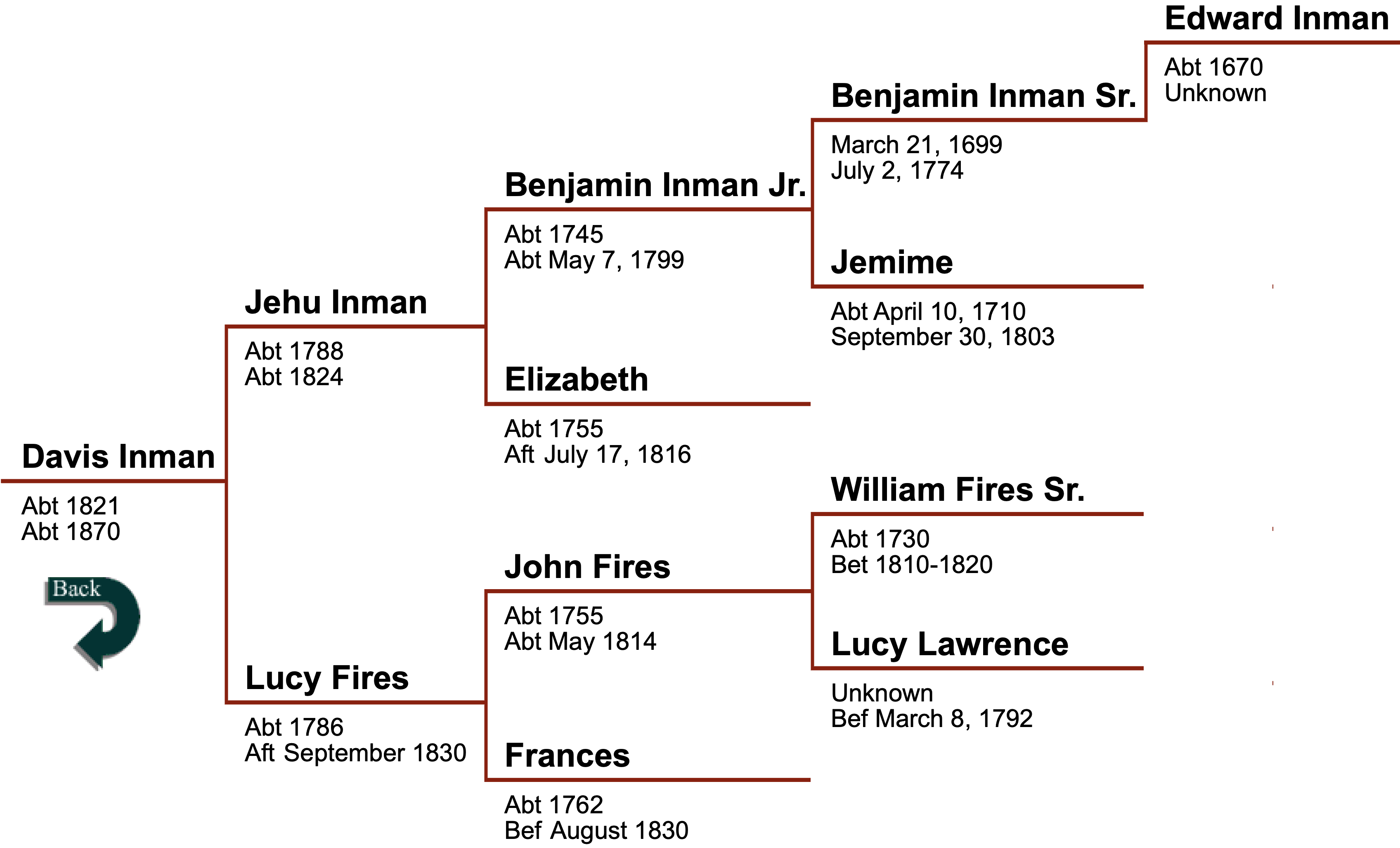 |
| Note: Before 1752 the year began on March 25th. Dates between January 1st and March 24th were at the end of the year, not the beginning. |
Jehu Inman was born about 1788 in the town of Newberry in Newberry County, South Carolina. This was the year that the Constitution was ratified and George Washington would become the first president the following year. Jehu was the fourth of eight children born to Benjamin Inman Jr. age 43 and Elizabeth (last name unknown), 33 years old. Jehu’s father Benjamin died in 1799 when Jehu was about 11 years old.
In Uncle Jack Babeu’s 1875 book The Early History of Greene County, Indiana it mentions Jehu Inman as being a first settler of Eel River Township: “Where Point Commerce now stands was a heavy forest of beech timber, when the first white people came to the mouth of Eel river, about fifty-seven years ago, and the first settlers on that hill were Alexander Craig, Jehu Inman, Charles Inman, Benjamin Huey, James Smith, Henry Littlejohn, James Banyan Mr. Nickles and a few others.” This would have Jehu coming to the Eel River region in 1818. The book goes on to tell about the first newcomer death and burial in the township: “Mr. James Banyan was the first white person that died in Eel River township, and there being no saw mill with which to make plank within fifty miles of that place, old Henry Littlejohn, Jehu Inman and John Craig went to the woods and dug out a poplar trough for a coffin, and Mr. Banyan was put in the trough and buried on the hill, among the forest trees, east cast of where the old brick chapel now stands.” Under the section of entitled Jefferson Township and Worthington, he mentions Jehu again: “Fifty years ago, the land on which Worthington now stands was a large and beautiful cotton field, of nearly fifty acres of choice cotton, in full bloom about the 1st of August, 1824. This cotton field was cultivated by Benjamin Shoemaker, William Winters, William Huey, Jehu Inman, John Craig, Thomas Stalcup and a few others; and that cotton field in bloom was said to be the nicest place and the prettiest crop in the western part of Indiana.” This book also mentions both John and Charles Inman several times, who could be his sons. Jehu Inman is said to have died in Greene County, Indiana, about 1824, before daughter Mary was born. |
| ~<^>~ |
Lucy Fires or Fiers, was born about 1786 in Sussex County, Virginia, three |
| ~<^>~ |
Benjamin Inman Jr. was born about 1745 near London, England. He was the seventh of ten children born to Benjamin Inman Sr. and Jemime, whose surname is unknown. He moved with his parents to South Carolina after 1754. In the web article Early Inmans of the South by Randy McConnell, he states that “John and Benjamin (Jr.) Inman had land claims on the Bush and Saluda rivers in SC by 1768.” This is in the part of the Ninety-Six District that would later become Newberry County. In order to attract new settlers, the colonial government promised fifty acres of free land for each family member that settled in the back country, a waiver of all rent payments on the land for ten years, and additional funding for their food and transportation. The promise of new land and opportunities brought a large influx of immigrants to South Carolina, most arriving from England, Scotland, and Ireland. Until the mid-1700s, the land had been the hunting grounds of the Cherokee and was largely appealing to the settlers for the richness of its landscape, which consisted of forests with little undergrowth and large hickory, oak, and pine trees. The Cherokee frequently attacked the settlers of the Ninety-Six district, who took refuge in forts that were scattered along creeks and rivers in the area. The Treaty of Charleston signed in 1761 officially ended the Cherokee War and the Indian occupation of the midlands. When the Revolutionary War broke out, because of their distance from the heated politics of the coast, most back country residents were unaware of the grievances carried by their coastal neighbors against the mother country. Many back country residents remained loyal to England, particularly those who had received large grants of land from the King. It was not until the capture of Charleston by the British in May 1780, that the opinions of many who had remained loyal to the British changed. Around 1780, when Benjamin Inman Jr. was about 35, he married Elisabeth (last name unknown) in Newberry County. Several battles were fought in this area around this time - Williams' Plantation, Dec. 31, 1780; Mud Lick, March 2, 1781; and Bush River, May 1781. In all, ten Revolutionary War battles were fought in Newberry County. It is not known if Benjamin fought in any of these battles or if he followed his father’s Quaker values of non-violence. He is not listed as a member of the Bush River Quaker Monthly Meeting, nor is his burial listed in their minutes, so it is assumed he was not a practicing Quaker. All the children of Benjamin and Elisabeth were born in Newberry County – Ahab in 1782; Arthur in 1784; Benjamin in 1786; ancestor Jehu; daughter Ferrele, sometimes called Phereby in 1790; Charles about 1792; Elizabeth in 1795; and George on June 24, 1798.
“In the name of God Amen, I Benjamin Inman of Newberry County State of South Carolina Ninety-six District, being weak of Body but of sound memory and in my perfect senses, Thanks be to God for his mercies have thought it, To make, ordain, and Constitute and I do hereby make, Ordain and Constitute this my last Will and Testament in manner and Form following. First it is my desire that after my Decease my Body shall be Interred in a decent solemn and Christian like manner the discretion of my Executors. Secondly I will and here by Order that all my just debts and Funeral Charges be justly functionally and timely paid out of my movable estate and outstanding Debts before any Division or distribution there of be made. Thirdly I give and bequeath unto my well loved Wife Elisabeth one third of the remaining part of my moveable estate to Her and To her Heirs and assigns for Ever. Fourthly I will and hereby Order that the remaining two thirds of my moveable estate be equally divided amongst my eight children namely Ahab, Arthur, Benjamin, Jehu, Ferrele, Charles, Elizabeth, and George Inman. Fifthly I also give and bequeath unto my aforesaid Wife all the profits arising from my lands and likewise full possession of the same during her natural Life or widowhood and from and after the marriage or decease of my said wife I give and bequeath all my aforesaid lands together with all and singular their rights...unto my six sons their heirs and assigns for ever in such manner as is hereafter mentioned...as soon as they attain the age of twenty one years... Lastly I do hereby nominate and appoint my trusty and well beloved brother Jehu Inman and my loving friend Joseph Furnace sole Exc to this my last Will and testament... I have here unto set my Hand this fourth day of November Anno Domini One thousand seven hundred and ninety eight. Benjamin Inman Jr, died prior to May 20, 1799, the date his will was proved; he was about 54 years old. His probate papers contain an entry for a David Hammer who was paid 0|3|6 for digging a grave for Benjamin Inman Jr on what looks like May 7th of that year. Unfortunately, it doesn't state where the grave was dug. From an inventory taken a month later on June 11th and from the Sale of Goods and Chattels pages in his probate papers, we learn he accumulated a vast estate including a plank house; books; smith tools; cooper ware; furniture; loom; gun; farm tools; farm animals; a silver watch; gallons of whiskey, rum, brandy; pewter and crockery; Dutch oven, rawhide, rabbit fur, chains and many other items. |
| ~<^>~ |
Elizabeth (last name unknown) was born about 1755 in England. About 1780, when she was about 25 years old, she married Benjamin Inman Jr. in Newberry, South Carolina. See Benjamin Inman Jr. above for marriage and children details. When her husband died she was left to raise her eight children, ages 1 to 17 alone.
|
| ~<^>~ |
John Fires Sr.’s birth is uncertain, he was probably born about 1755 in Sussex County, Virginia. He was one of five children, possibly the eldest, born to William Fires Sr. and his wife Lucy. When he was about 27 years old, he married Frances (last name unknown), possibly in Sussex or Southampton County, Virginia. They had eight children together, see Frances below for details. Some time after their eldest daughter’s marriage in 1804 and before ancestor Lucy’s marriage in 1809, they moved to Greene County, Ohio. In the History of Greene County, Ohio, author G.F. Robinson lists John as “Xenia, 1807; formerly lived near Union Church, south of Xenia.” So it is assumed he was in Xenia by 1807. John Fires Sr. wrote his will in November of 1810 and it reads as follows: “I John Fires, of Greene County and State of Ohio, being very sick and weak in body, but of perfect mind and memory knowing it is appointed for all men once to die do make and ordain this my last will and testament, [?]iz.- John did not sign his will, but made his mark, which means he probably couldn’t read or write. Most researchers say he died in 1810, but the inventory on his estate wasn’t taken until May 23, 1814. On July 2nd of that same year, items from his estate were sold. (Nine items were purchased by his son-in-law, ancestor Jehu Inman, listed as John Inman.) The last probate entry for his estate was dated April 7, 1815. So this researcher believes he died just prior to the taking of his inventory in 1814. His name appears in the Greene County, Ohio tax records after his death, from 1816 to 1819, as John Feires, Fires, and Fiars. These records show he owned tract # 2237, which was 29 second rate acres in the Caesars Creek Watercourse, purchased from the original owners, Warner and Addison Lewis. After 1819, this same land was in his wife’s name. |
| ~<^>~ |
Frances’ husband died after their move to Ohio, leaving her with children to take care of, but because he left her his estate, she did not have to remarry. Frances, who apparently could not read or write, made her mark on her July 2, 1814 and April 7, 1815 statements in her husband’s probate records. (Click on image right to open an enlargement in a new tab/window.) In the 1902 History of Greene County, Ohio, author G.F. Robinson lists Francis as “Xenia, 1820; widow of John Fires.” Robinson also lists Frances and John’s children as follows: “James, Xenia, 1811; soldier of 1812; son of John, Sr.: Has two sisters, Frances and Elizabeth. . . . Thomas, Xenia, 1819: January 5, 1822 married Ann Lewis.” Her name appears in the Greene County, Ohio tax records, for the same land her husband owned, from 1820 to 1826 as Francis Fires and Fiers. Being that her name, or any Fires surname is not listed in 1827, might mean the land was sold because she died or she may have moved with one of her children to Indiana. Because probate records can not be found for her, it isn’t known when or where Frances Fires died. Most researchers say she died before August of 1830 in Greene County, Ohio, but do not state any supporting evidence. |
| ~< Back to Chart >~ |
In about 1730 he married Jemime in South Carolina. They returned to Wales and had two children there – Henry in 1731 and John in 1733 who died in 1803. They had two more children near London – Joshua H. in 1735 who died on June 10, 1814, and Jehu in 1739 who died on December 12, 1803. They returned to South Carolina where George was born in 1741. They returned to Wales and Hannah was born there in 1742. They had four additional children all born near London – ancestor Benjamin Inman Jr. in 1745, Amos in 1750, Rufus on Oct 29, 1753 who died on May 1, 1824, and Aaron in 1754. In 1760, the family returned to South Carolina taking Benjamin's father Edward with them. In the book Newberry County, South Carolina: Historical and Genealogical Annals, George Leland Summer includes Benjamin and his brother Joshua in the list of the “first Quaker settlers.” Because his death is recorded in their minutes, it is assumed he was a member of the Bush River Quaker community (see below). Benjamin Edward Inman Sr. died on July 2, 1774 in Newberry County, SC. An entry in the transcript of the Bush River Monthly Meeting of Friends, reads “Benjamin Inmon died 7- 2-1774, buried the 3rd day, aged about 75 years.” So it is assumed he was buried on July 5th in the Bush River Quaker Cemetery (mouse over photo left), which today is in sad shape. Most of the stones are unreadable and many are missing or broken. Benjamin may not have ever had a stone, as the old Quaker tradition thought markers were too worldly. |
| ~<^>~ |
Jemime’s ancestry is unknown. Some researchers say she was born on April 10, 1710, in Newberry County, South Carolina. Others say she was born anywhere from 1700 to 1720. At this time, there were few settlers in the area that was to become Newberry - it was the hunting ground of the Cherokee. So it is unlikely she was born here. There supposably was a bible record of Inman births and deaths that lists her as “Jemima (83) 10 Mar 1720 23 Sep 1803.” It is assumed it means she was born on March 10, 1720 and died at 83 years old on September 23, 1803. These dates have not been confirmed and are in direct conflict with her estimated marriage and her first few children’s birth dates. It also should be noted that the death date listed for Benjamin is one year and 2 weeks later than the Quaker date for his death mentioned above. It may be that the bible was so badly damaged, the dates were hard to read. When Jemime was about 20, in 1730, she married Benjamin Edward Inman Sr. in South Carolina. See Benjamin Edward Inman Sr. above for marriage, children and travels. There is also uncertainty about her parents. Some say that her mother was Sarah Wood and her father was James Haworth, who died in 1720 in South Carolina, when their Jemime was about 8 years old. These parents are very doubtful because their daughter, Jemime Haworth, went on to marry John Wright a year before the death of our Jemime’s husband, Benjamin Edward Inman, Sr in 1774. What we do know for certain about Jemime is from the US 1790 Census for Newberry, SC. It shows Gemina Inman, as head of the household, living with 5 “Free White Males Under 16” and 4 “Free White Females.” This could be that her daughter Hannah and children were living with her. Right above her name is Jehu Inman with 3 “Free White Males Over 16,” 1 “Free White Males Under 16,” and 2 “Free White Females.” This is most likely her son. Neither of them had slaves. In George Leland Summer’s book Newberry County, South Carolina: Historical and Genealogical Annals, he states that her son “John Inman died about 1803, leaving widow, Mary, and aged mother, Mrs. Jemima Inman.” Being that the names John and Jehu are used interchangeable, Summer made an error, as it is Jehu’s will which states: “keep one fourth of my moveable estate for the support of my aged mother Jemime Inman . . .”, it is very possible she was living with or near her son Jehu on November 29, 1802, the date he wrote his will. This implies that Jemime Hayworth Inman died after November of 1802, so the bible record that states she died on September 23, 1803, may be accurate. Unfortunately, nothing more is known about her. |
| ~<^>~ |
William Fires Sr’s birth is unknown. He was probably born about 1730 in Sussex County, Virginia to parents unknown. His surname has been recorded as Fier, Fiers, Fear, Fears, Friers, as well as Fire. Sometime between 1750 and 1760, he married Lucy probably in Sussex County and they had at least five children together. See her bio for names and dates. His wife Lucy probably died prior to March 8, 1792, the date he married Sally (nee Sara Spencer) Jackson in Southampton, Virginia. Some researchers say that William and his new wife had a daughter named Sallie in 1793, but records can't be found to confirm this.
~< Back to Chart >~ Lucy Lawrence is known only by name for her marriage to William Fires Sr. There isn’t proof that her surname was Lawrence, some say it was Davis. Lawrence as her surname came into being because that is the middle name of her youngest son, but this same son had a John Davis for a godparent. Lucy and William had at least five children together, all believed to have been born in Sussex County, Virginia — ancestor John may be the eldest; William Jr. is said to have been born on October 4, 1760, married Elizabeth Spencer on December 13, 1787; Lucretta who was baptized on March 6, 1768, married William Spencer on October 23, 1799; Drury, baptized on December 5, 1770, whose name was recorded as Dreury on the record of his December 31, 1800, marriage to Molly Mary Bishop and as Drewry and Andrew in some ancestries; and Thomas Lawrence, baptized on June 12, 1774, married Temperance Vick on December 23, 1803, and moved to Livingston County, Kentucky. Christening records exist for Lucy and William’s last three children in the Albemarle Parish Records collections, although their surnames are spelled differently. The surnames of the godparents for each child were Weathers, and Atkinson for Lucretta; Mabrey, and Atkins for Drury; and Davis and Adkins for Thomas Lawrence. Being that family members were usually made godparents, Lucy’s maiden name could have been any of these surnames. It should be noted that Albemarle Parrish was formed in 1738 and covered the southern portion of Surry County. It became part of Sussex County when that county was created from Surry County in 1753. When Lucy died is unknown, but this researcher believes it was shortly after her last child was born. On Lucy’s daughter Lucretta’s marriage information found in the compilation Marriage bonds and ministers' returns of Southampton County, Virginia, 1750-1810, Catherine Lindsay Knorr notes that Croesa (Crisey) Fiers is listed as the dau. Of William and Sally Fier. It also states her name is recorded as “Creesa” in Ministers’ returns 24 Oct. Because Creesa can’t possible be the daughter of Sally, it may be that Sally was like a mother to the young girl, after her own mother died. What we do know for certain is that William remarried on March 8, 1792, so Lucy was gone prior to that date. |
| ~<^>~ |
In 1760 Edward immigrated to America traveling with his son Benjamin and his family, arriving in Charleston Harbor, South Carolina (pictured right), after an eight-month voyage. He settled in Newberry County, South Carolina.Unfortunately, nothing more is known about him. It is not known where and when he died or where he is buried. In a very informative web article Early Inmans of the South, Randy McConnell states: “The English Inmans drew their name from their jobs: they were medieval innkeepers, who offered lodging as well as food and drink for travelers. The Inmans were centered on the ancestral home in Pately Bridge, Yorkshire, England, and were members of the landed gentry who were descended from King John of Gaunt. The law of primogeniture, in which the eldest child, especially the eldest son, inherited the entire estate of one or both parents, forced younger sons to pursue mercantile and other occupations. This inability to inherit family land combined with persecution of the Quakers (or Puritans) led to their immigration to America. The direct lineage of the Southern colonial Inmans remains murky as it extends west.” |
| ~< Back to Chart >~ |
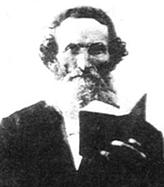
 years after the end of the Revolutionary War. She was the second of eight children born to John Fires Sr. and Frances (surname unknown). The family moved to Greene County, Ohio, sometime before June 27, 1809, when Lucy, about 23 years old, married Jehu Inman in Xenia. See Jehu Inman above for marriage and children. Lucy Fires Inman died sometime after September of 1830 in Clay County, Indiana.
years after the end of the Revolutionary War. She was the second of eight children born to John Fires Sr. and Frances (surname unknown). The family moved to Greene County, Ohio, sometime before June 27, 1809, when Lucy, about 23 years old, married Jehu Inman in Xenia. See Jehu Inman above for marriage and children. Lucy Fires Inman died sometime after September of 1830 in Clay County, Indiana.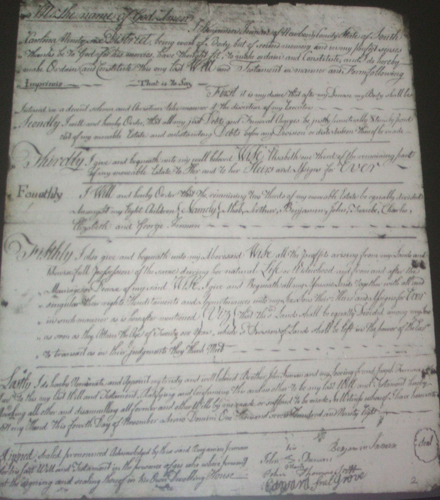
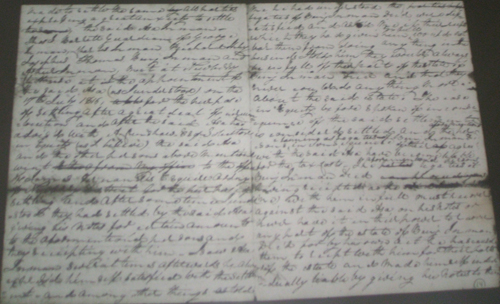 In her husband's probate records, which consist of more than 100 pages, is an Equity Suit, which was filed in the Washington District of SC. This suit is all hand written, not dated, and is difficult to read. (Mouse over image right.) The Newberry County, South Carolina Probate Estate Abstracts Vol 1 describes the text as follows: “Charles Inman, Richard Ily & wife , Jos. Thomas & wife, and Thomas. S. Barrett, guardian of George Inman vs. Asa Inman, Mary Inman and Henry Steddom for accounting of estate.” The book goes on to state that both executors of Ben’s will, his brother Jehu and friend Jos. Furnas, were now dead and so was one of the executors to brother Jehu’s will, thus “Monies from the estate of Benj. Inman have been since turned over to Mary Inman & Asa Inman.” Asa was directed to make an accounting of the funds and “make agreeable settlement with the legatees.” So who are all these people? Henry Steddom was the surviving executor of brother Jehu’s will. Mary is the widow of brother Jehu and Asa is their son. Charles Inman is Benjamin and Elizabeth’s sixth child; Richard Ily’s wife was Phereby Inman, their fifth child; Josephus Thomas’ wife was their daughter Elizabeth; and George was their youngest child born about 1798. These children were all very young when their father died leaving them equal shares of ⅔ of his estate upon reaching 21 years old. Being that the estate was settled in 1816 and brother Jehu died about 1803, this suit must have taken place between 1803 and 1816. The real question is, who is George’s guardian Thomas S. Barrett? We know Elizabeth did not marry again as she received her full share of the inheritance. Could he be a brother, cousin, or a real good friend? We may never know.
In her husband's probate records, which consist of more than 100 pages, is an Equity Suit, which was filed in the Washington District of SC. This suit is all hand written, not dated, and is difficult to read. (Mouse over image right.) The Newberry County, South Carolina Probate Estate Abstracts Vol 1 describes the text as follows: “Charles Inman, Richard Ily & wife , Jos. Thomas & wife, and Thomas. S. Barrett, guardian of George Inman vs. Asa Inman, Mary Inman and Henry Steddom for accounting of estate.” The book goes on to state that both executors of Ben’s will, his brother Jehu and friend Jos. Furnas, were now dead and so was one of the executors to brother Jehu’s will, thus “Monies from the estate of Benj. Inman have been since turned over to Mary Inman & Asa Inman.” Asa was directed to make an accounting of the funds and “make agreeable settlement with the legatees.” So who are all these people? Henry Steddom was the surviving executor of brother Jehu’s will. Mary is the widow of brother Jehu and Asa is their son. Charles Inman is Benjamin and Elizabeth’s sixth child; Richard Ily’s wife was Phereby Inman, their fifth child; Josephus Thomas’ wife was their daughter Elizabeth; and George was their youngest child born about 1798. These children were all very young when their father died leaving them equal shares of ⅔ of his estate upon reaching 21 years old. Being that the estate was settled in 1816 and brother Jehu died about 1803, this suit must have taken place between 1803 and 1816. The real question is, who is George’s guardian Thomas S. Barrett? We know Elizabeth did not marry again as she received her full share of the inheritance. Could he be a brother, cousin, or a real good friend? We may never know. 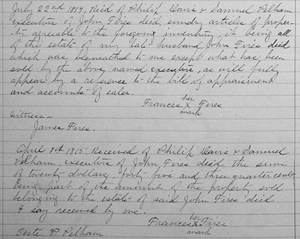
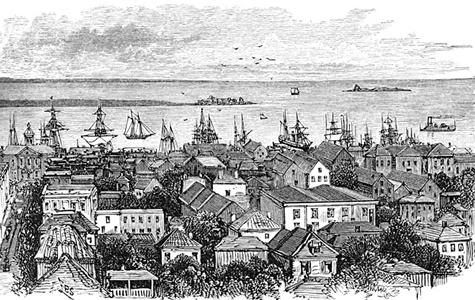 Benjamin Edward Inman Sr. was born March 21, 1699, in Wales, the third son of Edward Inman, 29 years old, and an unknown spouse. Benjamin crossed the Atlantic at least five times, traveling between Great Britain and the British colony of South Carolina through Charleston Harbor (mouse over picture right).
Benjamin Edward Inman Sr. was born March 21, 1699, in Wales, the third son of Edward Inman, 29 years old, and an unknown spouse. Benjamin crossed the Atlantic at least five times, traveling between Great Britain and the British colony of South Carolina through Charleston Harbor (mouse over picture right). 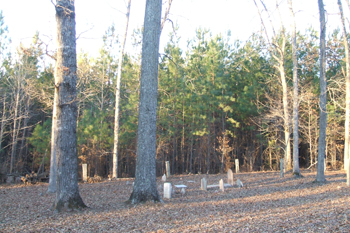 In the web article Early Inmans of the South by Randy McConnell, he states that “Benjamin Sr. (1698-July 4, 1774), sprouted in western SC and spread across the South after the War of 1812.” In John Abney Chapman’s book The Annals of Newberry-Part Second, he includes the Inman name among many others after this statement: “The following names have vanished from the records of the county entirely. Their blood, however, still flows in the veins of their descendants of other names; but their names are now only matters of history or tradition, and some of them are but dimly remembered and are almost forgotten:”
In the web article Early Inmans of the South by Randy McConnell, he states that “Benjamin Sr. (1698-July 4, 1774), sprouted in western SC and spread across the South after the War of 1812.” In John Abney Chapman’s book The Annals of Newberry-Part Second, he includes the Inman name among many others after this statement: “The following names have vanished from the records of the county entirely. Their blood, however, still flows in the veins of their descendants of other names; but their names are now only matters of history or tradition, and some of them are but dimly remembered and are almost forgotten:” 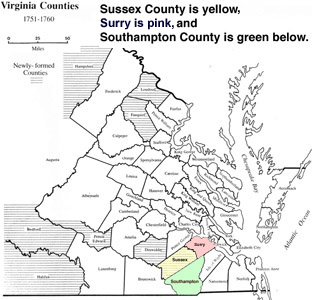 It is believed that William Fires Sr. died between 1810 and 1820 in Southampton County, Virginia. Nothing more is known about him. It should be noted that prior to this time borders were changing and new counties were being created. Sussex and Surry Counties were formed out of Southampton County (mouse over image), so records may have been lost.
It is believed that William Fires Sr. died between 1810 and 1820 in Southampton County, Virginia. Nothing more is known about him. It should be noted that prior to this time borders were changing and new counties were being created. Sussex and Surry Counties were formed out of Southampton County (mouse over image), so records may have been lost. 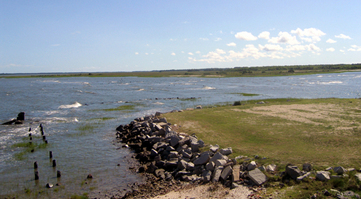 Edward Inman was born about 1670 in Wales to unknown parents. He married (spouse name is unknown) and settled in London, England, and they had five sons and two daughters all born in the United Kingdom – The two daughters died early in life and their names are unknown; Henry the eldest son joined the English Navy at 18 years of age and died when his ship sunk in battle; John, the second son served as a Soldier for five years; Benjamin, the third son, was born on March 21, 1699 in Wales; Jahuh or Jehu was the fourth son; and Joshuay was his last son.
Edward Inman was born about 1670 in Wales to unknown parents. He married (spouse name is unknown) and settled in London, England, and they had five sons and two daughters all born in the United Kingdom – The two daughters died early in life and their names are unknown; Henry the eldest son joined the English Navy at 18 years of age and died when his ship sunk in battle; John, the second son served as a Soldier for five years; Benjamin, the third son, was born on March 21, 1699 in Wales; Jahuh or Jehu was the fourth son; and Joshuay was his last son.